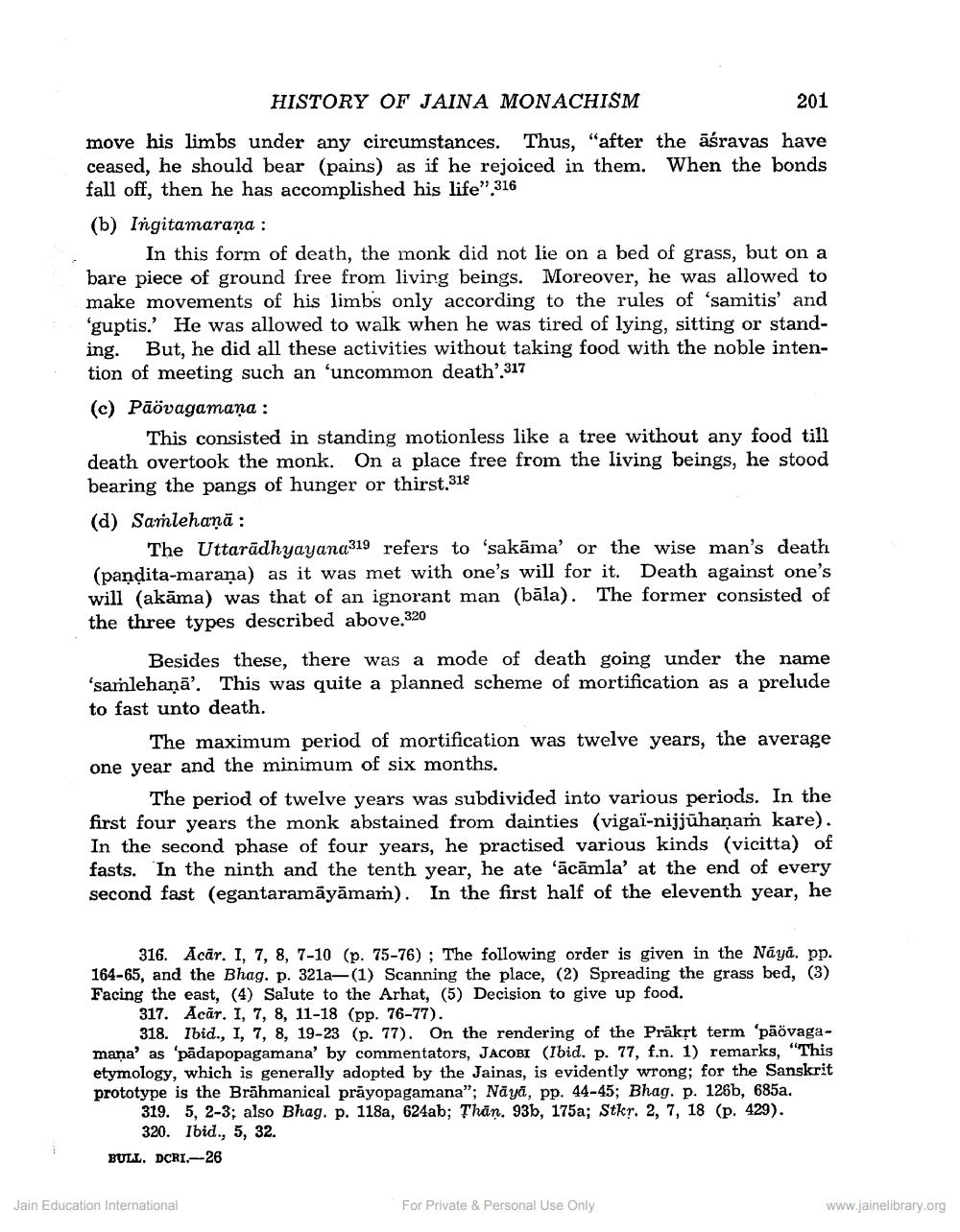________________
HISTORY OF JAINA MONACHISM
201
move his limbs under any circumstances. Thus, "after the āśravas have ceased, he should bear (pains) as if he rejoiced in them. When the bonds fall off, then he has accomplished his life" 316 (b) Ingitamarana :
In this form of death, the monk did not lie on a bed of grass, but on a bare piece of ground free from living beings. Moreover, he was allowed to make movements of his limbs only according to the rules of ‘samitis' and ‘guptis.' He was allowed to walk when he was tired of lying, sitting or standing. But, he did all these activities without taking food with the noble intention of meeting such an 'uncommon death'.317 (c) Pāövagamana :
This consisted in standing motionless like a tree without any food till death overtook the monk. On a place free from the living beings, he stood bearing the pangs of hunger or thirst.318 (d) Samlehanā :
The Uttarādhyayana319 refers to 'sakāma' or the wise man's death (pandita-marana) as it was met with one's will for it. Death against one's will (akāma) was that of an ignorant man (bāla). The former consisted of the three types described above 320
Besides these, there was a mode of death going under the name 'samlehaņā”. This was quite a planned scheme of mortification as a prelude to fast unto death.
The maximum period of mortification was twelve years, the average one year and the minimum of six months.
The period of twelve years was subdivided into various periods. In the first four years the monk abstained from dainties (vigaï-nijjūhanam kare). In the second phase of four years, he practised various kinds (vicitta) of fasts. In the ninth and the tenth year, he ate 'ācāmla' at the end of every second fast (egantaramāyāmam). In the first half of the eleventh year, he
316. Acār. I, 7, 8, 7-10 (p. 75-76) ; The following order is given in the Nāyā. pp. 164-65, and the Bhag. p. 321a-(1) Scanning the place, (2) Spreading the grass bed, (3) Facing the east, (4) Salute to the Arhat, (5) Decision to give up food.
317. Acār. I, 7, 8, 11-18 (pp. 76-77).
318. Ibid., I, 7, 8, 19-23 (p. 77). On the rendering of the Prākrt term 'pāövagamana' as 'pädapopagamana' by commentators, JACOBI (Ibid. p. 77, f.n. 1) remarks, "This etymology, which is generally adopted by the Jainas, is evidently wrong; for the Sanskrit prototype is the Brāhmanical prāyopagamana"; Naya, pp. 44-45; Bhag. p. 126b, 685a.
319.5, 2-3; also Bhag. p. 118a, 624ab; Thán. 93b, 175a; Stkr. 2, 7, 18 (p. 429).
320. Ibid., 5, 32. BULL. DCRI.-26
Jain Education International
For Private & Personal Use Only
www.jainelibrary.org




